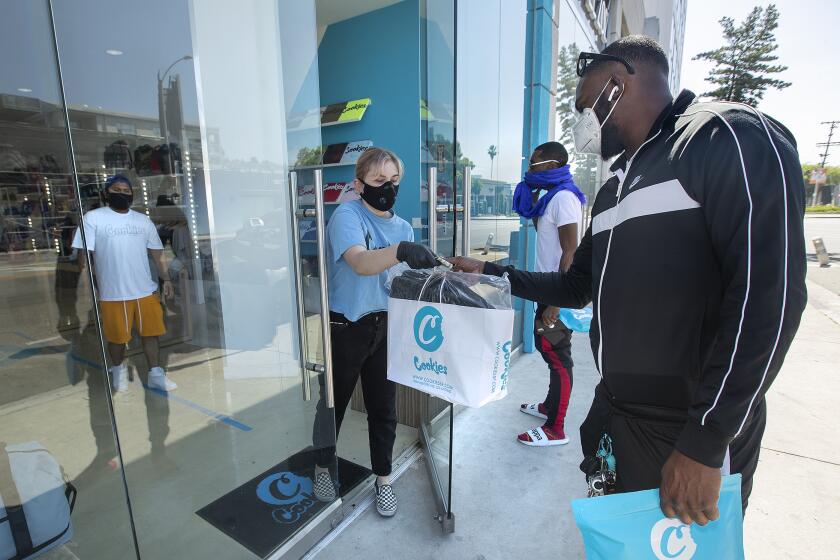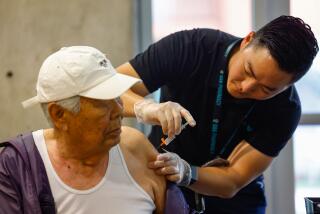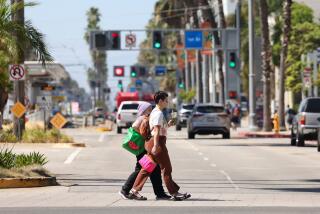Why scientists say talk about a second wave of COVID-19 cases is premature
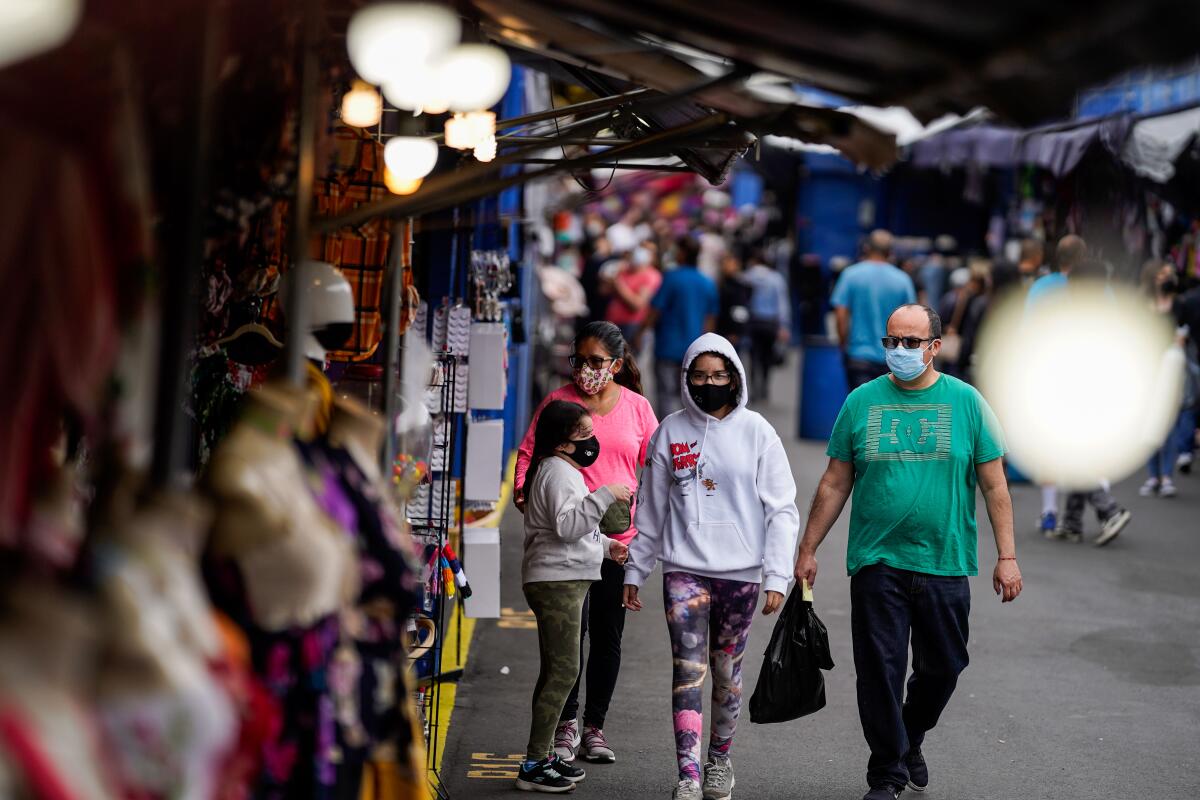
- Share via
About 120,000 Americans have died of COVID-19, and daily counts of new cases in the U.S. are the highest they’ve been in more than a month, driven by recent increases in the South and Southwest.
The alarming trend has spurred talk of a “second wave” of coronavirus infections in the U.S. But health experts agree that “second wave” is probably the wrong term to describe what’s happening.
“When you have 20,000-plus infections per day, how can you talk about a second wave?” said Dr. Anthony Fauci , director of the National Institute of Allergy and Infectious Diseases. “We’re in the first wave. Let’s get out of the first wave before you have a second wave.”
Clearly there was an initial infection peak in April as cases exploded in New York City. After schools and businesses were closed across the country, the rate of new cases dropped somewhat.
But “it’s more of a plateau, or a mesa,” not the trough after a wave, said Caitlin Rivers, a disease researcher at Johns Hopkins University’s Center for Health Security.
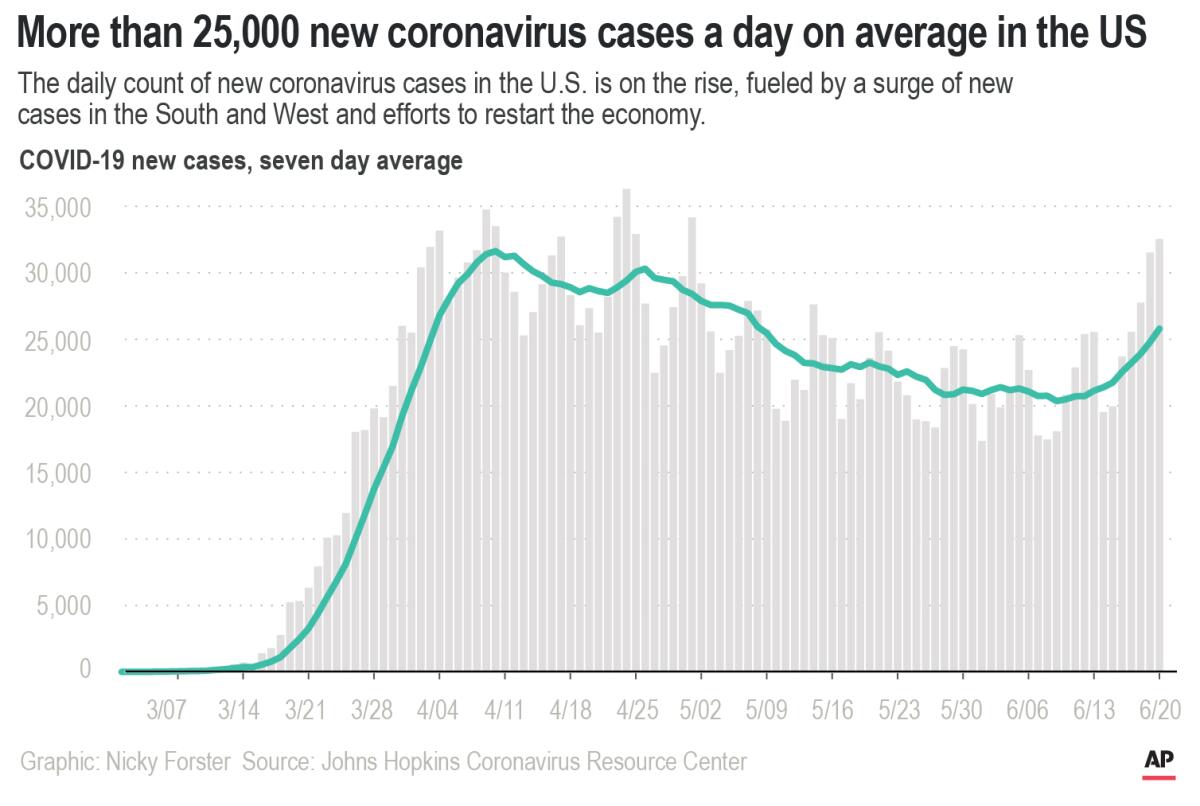
Scientists generally agree the nation is still in its first wave of coronavirus infections, albeit one that’s dipping in some parts of the country while rising in others.
“This virus is spreading around the United States and hitting different places with different intensity at different times,” said Dr. Richard Besser, chief executive of the Robert Wood Johnson Foundation who was acting director of the federal Centers for Disease Control and Prevention when the H1N1 flu pandemic hit the U.S. in 2009.
Dr. Arnold Monto, a flu expert at the University of Michigan, echoed that sentiment.
“What I would call this is continued transmission with flare-ups,” he said.
Cities and states are pressing ahead with plans to do so. But has anything changed about the coronavirus that makes it safer to go out now?
Flu seasons sometimes feature a second wave of infections. But in those cases, the second wave is a distinct new surge in cases from a strain of flu that is different than the strain that caused earlier illnesses.
That’s not the case in the coronavirus epidemic.
Monto doesn’t think “second wave” really describes what’s happening now, calling it “totally semantics.”
“Second waves are basically in the eye of the beholder,” he said.
But Besser said semantics matter, because implying that a first wave has passed may give people a false sense that the worst is over.
Some worry a large wave of coronavirus might occur this fall or winter — after schools reopen, the weather turns colder and less humid, and people huddle inside more. That would follow seasonal patterns seen with flu and other respiratory viruses. And such a fall wave could be very bad, given that there’s no vaccine and most Americans still won’t have any immunity to the virus.
But the new coronavirus so far has been spreading more episodically and sporadically than flu, and it may not follow the same playbook.
“It’s very difficult to make a prediction,” Rivers said. “We don’t know the degree to which this virus is seasonal, if at all.”
